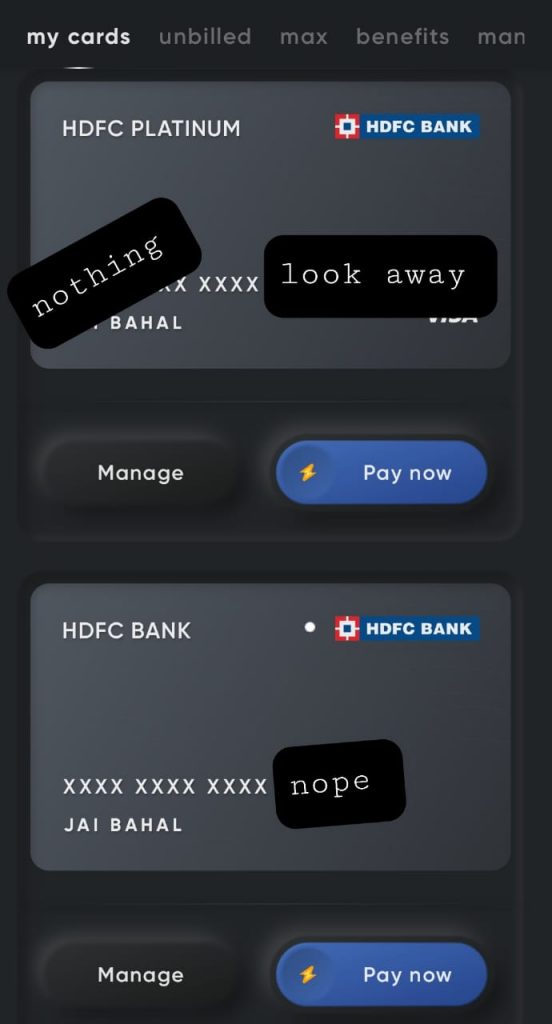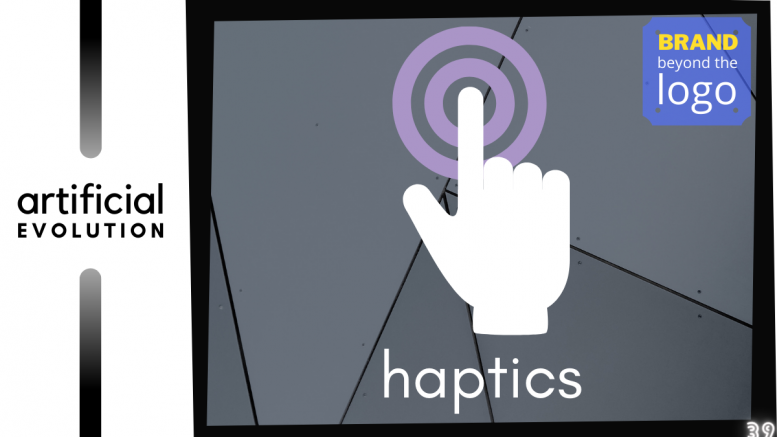In continuation of our “Brand beyond the logo” series, this week we discuss how brands use haptics and touch interfaces to interact with the end user. To read part 1 of this series, click here
First, a semi-angry rant.
Like most people, I have some strong priorities in the way I use my phone.
My display layout is black and white. I have exactly 2 games on my phone – COD Mobile and Scrabble. Lastly, I don’t have any social media apps.
My phone’s use-case barely goes beyond my specific holy trinity – WhatsApp, Caller/Keypad and 9gag.
Then one day I got a credit card.
Credit card companies – when I want to pay you the money I owe you, wouldn’t you want to make it easy? With buggy transitions, layouts last used in the early 2000s and not allowing multiple payment methods – you’re alienating the customer.
Your lack of customer centricity is why CRED exists.
(Okay, I’m done)
‘It really feels like soft-touch buttons’
When I downloaded CRED for the first time, it was nice. Dark theme, easy navigation, good gesture input, interesting rewards and I COULD ACTUALLY PAY MY BILLS IN THREE MINUTES OR LESS.
The way the CRED positioned itself as a premium (read: “exclusive”) app was through effective brand partnerships with like-minded brands, their reward structure and their ads (largely in english or focused on ‘not everyone gets it’).
Around late 2019/early 2020, they rolled out their new update. And it changed the way I started thinking about how apps should be designed.
You know when you use an app like Instagram and want to access, let’s say your DM’s, it feels like you’re pressing an icon on a flat service. Feels like a screen.

The new update to CRED made the screen feel more tactile. It was really strange the first time I pressed the “soft-touch buttons” on screen. It felt like a natural progression to their theme of a premium experience. On CRED, buttons to ‘Manage your card’ or ‘Pay now’ or ‘View FAQs’ mimic a familiar touch feedback through your device’s vibration motor that a physical soft touch rubber button would. For me, this was an important lesson.
Haptics were evolving.
What are haptics?
Margaret Magnarelli, content marketing and marketing psychology specialist, writes in her Forbes article:
“Haptic information is the information we acquire using the power of touch. Haptic marketing is a relatively new discipline that focuses on the use of tactile sensations to influence purchasing.”
In 2021, we’re so used to using touch-screens, we’ve forgotten how the clicky keys felt on our Blackberries and Nokias less than 10 years ago. After they were adopted en masse, haptics and touch input was one of the easiest ways customers connected with their devices. With the introduction of multi-touch (which brought pinching in and out, long press to delete etc), we got used to this ‘natural progression’ of interaction.
What types of haptics are used?
- Touch screens: From devices that use a stylus to ones that detect and interact with physical objects, this tech has been one of the most intuitive, and honestly, heavily funded ways of input to a device. Over time, more demand = more supply = cheaper manufacturing = low cost screens. However, customer standards keep going higher. The quality/technology of the screen, the input lag and software the user interacts with, determines the ‘quality’ of a Samsung Galaxy Note device compared to an Amazon Kindle. Both great devices – but very different perceived quality – different brand perception.
- Buttons/Dials/Toggle switches: Sometimes old tech is best tech. Usually when the “touch interaction” is passive. When you’re driving and want to increase/decrease the volume on your car’s stereo, you WANT a rotating knob or up/down buttons – NOT a touch screen. Not just because the default touch screens that cars usually come with are bad but also because your eyes need to be on the road. From a specialist point of view, photographers swear by the half-click shutter switch on most cameras. It allows the auto-focus to shift to the subject in the frame. Essentially, real buttons are not going to be completely replaced anytime soon.
- Touch pads: In part one of this series, I mentioned about wireless headphones. Since most of them lack physical buttons and are too tiny to fit screens on, they settled for touch pads that allow limited input. I’m not an audiophile but from a practicality point of view, it’s pretty good. 2 taps on either side to answer or end a call or a 5 second hold to reconnect from my laptop to my phone or vice versa. The same actions on wired earphones take about as long – touch pads are just plain more convenient.
- Bone Conduction: This tech, cutting edge as it is, hasn’t really found mass acceptance. I tried a pair of BC headphones at an (Dubai, I think?) airport tech store and found them fascinating. Technically an audio solution, bone conduction uses a different approach to provide sound than traditional audio drivers. Instead of pushing air through your ear canal, this tech sits above your ear and sends tiny (you’ll only feel it if you think about it) vibrations through your bones directly to your ear-drum. The coolest part? When the headphones are not physically touching your skin, there is almost so sound. As soon as it makes contact, voila. The added advantage is that you can always hear the world since there isn’t anything blocking your ears. There aren’t too many brands who are really worth their salt in this tech except Aftershokz. Its inspiring to see that customers who find this as the better solution, never go back to traditional headphones.
Edit: Apple recently filed a patent. Lew from UnboxTherapy discusses this:
- Vibration Motors and rotors: Probably the heart and soul of making anything ‘feel real’. These motors are what make haptics – feel like haptics. Including cell phones, chances are that you have at least 3 devices at home that use this tech to provide feedback. 2 of my favorite examples for this tech are:
- LeChal – An Indian startup that creates smart shoes and shoe soles for the visually impaired. They connect to your GPS and provide vibration and sound feedback for guidance.
- Game controllers: Gaming consoles companies know that immersion for the player is important. Patterned vibrations for explosions, gunshots, collisions or (my favourite) creating tension when your opponent is about to take a penalty kick in FIFA 2020.
This year Sony went a step ahead by providing a specific function to it’s new PS5 DualSense controller. It solved a gamer problem that has existed since the beginning of games. In racing games specifically, gamers used to mash the buttons or triggers hard for max output. However, they only got either full acceleration or none of it. This time, they put in rotors in the back triggers. This way, gamers could actually control the level of input for, let’s say, pulling off a drift or powerslide in Forza 8.
IGN explains how it works:
What’s next?
Whether to increase efficiency for digital ad slots or increasing brand recall by customer engagement, haptics are still in their infancy. There is a lot that can and will be done in the future. With the VR industry crossing the USD 10 Billion mark in 2019, haptics will grow in tow. Also, like the CRED example first stated in the essay, imagination trumps brute force. Creativity in use of haptics is what brands would probably focus on. More brands, especially, consumer electronics will need to used innovative haptics to keep their audiences addicted to ‘that feeling’.
The views and opinions published here belong to the author and do not necessarily reflect the views and opinions of the publisher.



Leave a comment